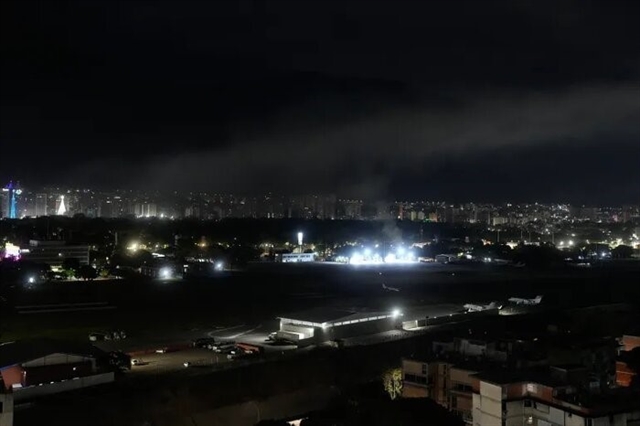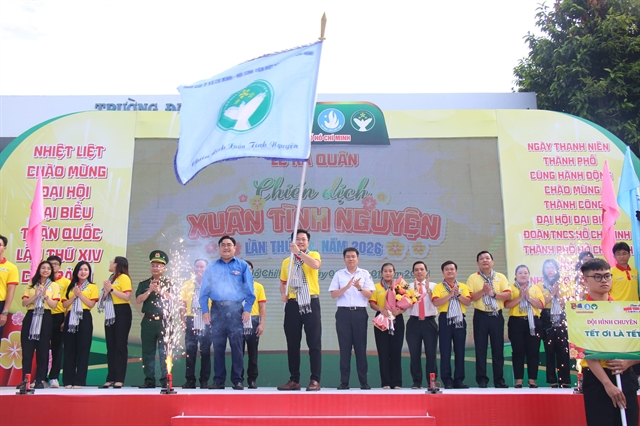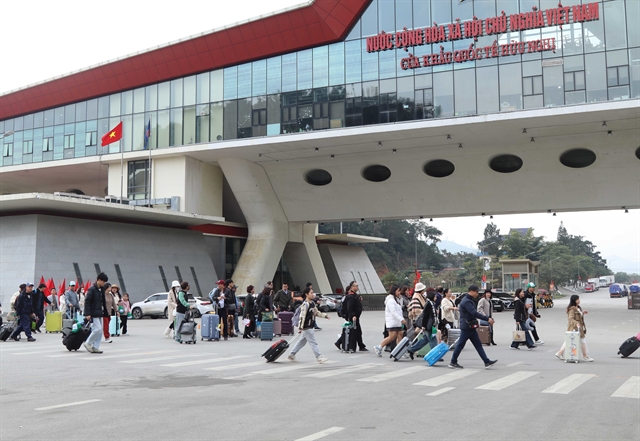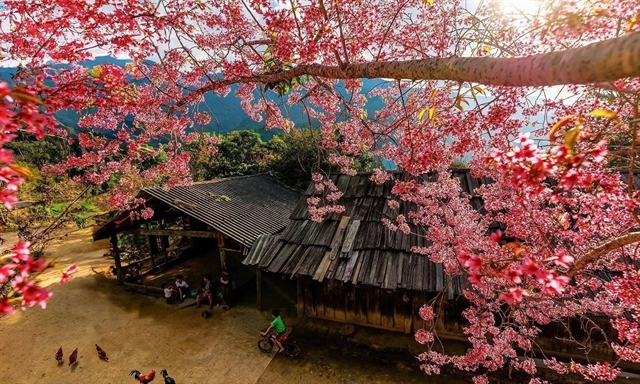 Travel
Travel
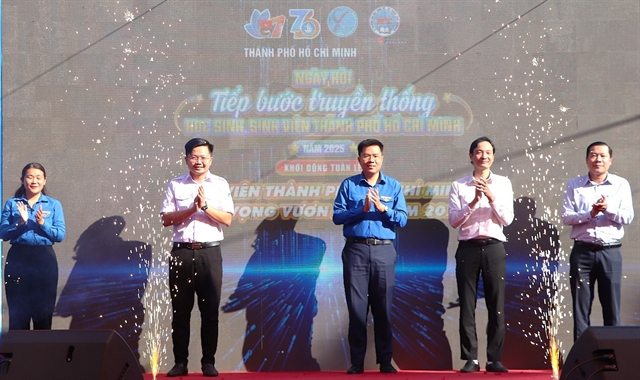

|
| The dinosaur spine at Phia Pò Peak in the Mẫu Sơn Tourist Area belongs to the Lạng Sơn UNESCO Global Geopark. — Photo phunuvietnam.vn |
Nestled in Việt Nam's enchanting northeastern region, Lạng Sơn is a land of breathtaking limestone mountains, mysterious caves and a vibrant culture steeped in national identity. This region is home to a geological treasure that dates back an astonishing 500 million years: the Lạng Sơn Geopark.
Recently honoured by UNESCO as a Global Geopark, Lạng Sơn now stands proudly among the 50 countries boasting 229 parks within the Global Geopark Network. This recognition marks a new chapter for the province, enhancing its profile on the world tourism map while fostering sustainable tourism, heritage conservation and international connectivity.
Covering the administrative districts of Bắc Sơn, Chi Lăng, Hữu Lũng, Văn Quan and Lộc Bình as well as Lạng Sơn City, the geopark also extends into parts of Bình Gia and Cao Lộc districts. As one of the largest geoparks in Việt Nam, Lạng Sơn is home to around 200 caves and stunning waterfalls, offering immense potential for tourism development.
Among its many fascinating caves, remnants of ancient underground rivers are evident in places like Thẩm Khoách, Lắc and Dơi Cave. Others, such as Thẩm Khuyên, Thẩm Hai, Kéo Lèng, Gió and Nhị - Tam Thanh Cave, are treasure troves of archaeological, cultural and historical significance.

|
| Thẩm Khuyên – Thẩm Hai Cave in Bình Gia District is located in the Lạng Sơn UNESCO Global Geopark area. — Photo phunuvietnam.vn |
Lạng Sơn Geopark weaves an epic tale of earth's evolution over millions of years. The ancient rock layers here preserve the remnants of a primordial seabed -- once teeming with trilobites, which are among the earliest arthropods to appear in the fossil record. As the sea receded, it gave rise to layers of shale, sandstone and limestone, sculpting a unique volcanic landscape.
A highlight of the park is Trũng Na Dương, a natural depression that unveils a tropical ecosystem from 20 to 40 million years ago, rich with fossils of plants and animals. This area holds invaluable clues about the migration patterns of mammals across continents. Furthermore, the Bắc Sơn limestone massif, formed from ancient marine sediments, bears witness to prehistoric life through stone tools, pottery and burial sites, offering a glimpse into Việt Nam's human history.
The unique geology of Lạng Sơn also shapes local agriculture, as the mineral-rich soil creates ideal conditions for cultivating specialty crops like custard apples and star anise, vital resources for its people.
Deputy Director of the province's Centre for Investment, Trade and Tourism Promotion Trần Thị Bích Hạnh describes the geopark as a “gem” in northern Việt Nam's mountainous region, a place where 500 million years of life’s evolution unfolded in its ancient seas and volcanic landscapes.

|
| A corner of a cave at the bottom of Ùng Roặc Sinkhole, Bình Gia District, in the Lạng Sơn UNESCO Global Geopark area. — Photo Vietnam Expeditions |
Beyond its geological marvels, Lạng Sơn Geopark is steeped in rich cultural heritage. The spiritual life here is deeply intertwined with the Mother Goddess religion, recognised by UNESCO as a representative intangible cultural heritage of humanity. Notable temples and pagodas, such as Bắc Lệ Temple in Hữu Lũng District and Tam Thanh Pagoda in Lạng Sơn City, exemplify this vibrant cultural tapestry.
In September, Lạng Sơn Province will be officially awarded the title of UNESCO Lạng Sơn Global Geopark at a ceremony in Chile, followed by a grand celebration in November in the province itself. Currently, the geopark features four tourist routes encompassing 38 attractions, all under the theme 'Evolution of Life in the Sacred Land', with each route uniquely captivating visitors.
Over the past few years, local authorities and residents have united to awaken the area's unique geological potential, positioning Lạng Sơn as a must-visit destination on both the Vietnamese and international tourism maps.
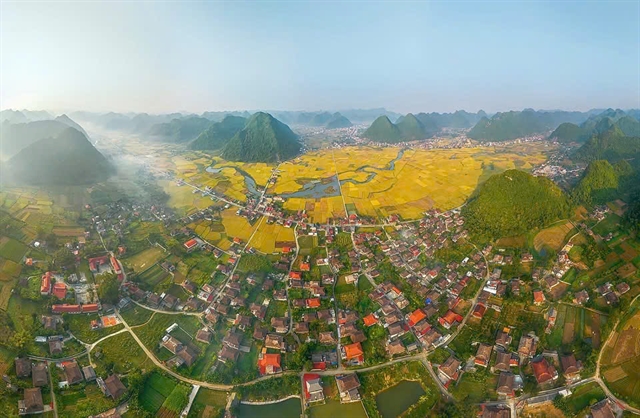
|
| Bắc Sơn Valley in Bắc Sơn District, part of the Lạng Sơn UNESCO Global Geopark area. — Photo phunuvietnam.vn |
Deputy Director of Lạng Sơn Province's Department of Culture, Sports and Tourism Lê Hải Yến said that developing tourism based on geoparks represents a strategic, sustainable direction. The province is heavily investing in preserving its geological treasures while crafting unique tourist experiences and enhancing promotion efforts to attract both domestic and international visitors.
The journey to make the most of Lạng Sơn’s 500 million-year-old potential is a collaborative effort, with local residents and dedicated tourism workers playing pivotal roles. Hoàng Vũ, owner of Sơn Thủy Homestay, said: “Visitors to Hữu Liên can explore amazing caves with stunning stalactites and immerse themselves in the rich cultures of the Tày, Nùng and Dao ethnic groups.”
The positive impact of tourism resonates throughout the community. Yên Thịnh Commune resident Mè Ngọc Loan noted: “With the influx of tourists, we now have more opportunities to showcase our traditional culture through songs and dances.”
Awakening the 500-million-year potential of Lạng Sơn Geopark will not only boost the economy, but also foster awareness of preserving natural and cultural heritage. The people of Lạng Sơn are coming together to build a sustainable tourism future, where geological treasures are respected and celebrated, offering enriching experiences to visitors while providing lasting benefits to the community.
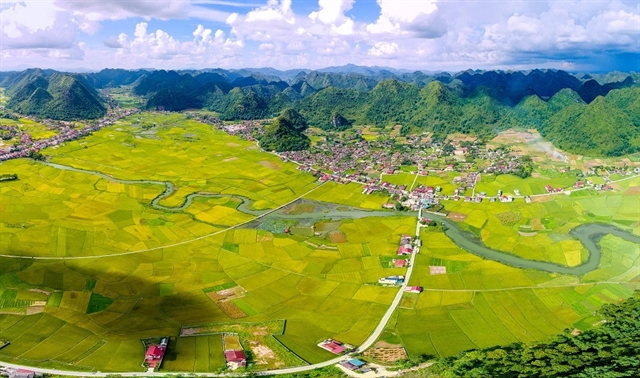
|
| Another view of Bắc Sơn Valley, located in Lạng Sơn Geopark. — Photo courtesy of Lạng Sơn Geopark |
With unwavering dedication, Lạng Sơn Geopark is carving out its place in the Vietnamese tourism landscape, not just as a repository of history and culture, but as a 500-million-year-old giant awakening to reveal its wonders to all who venture into this captivating land. - VNS

